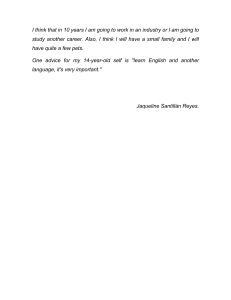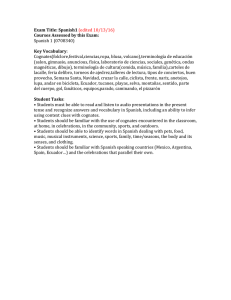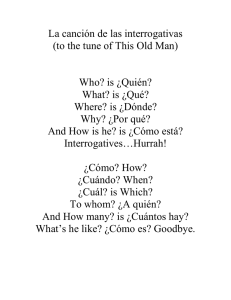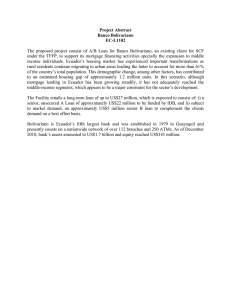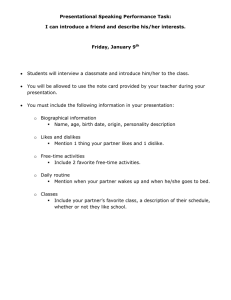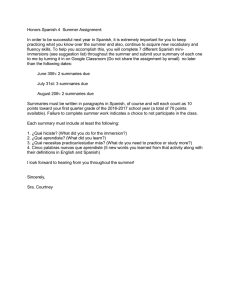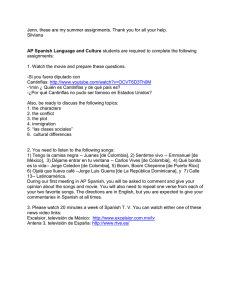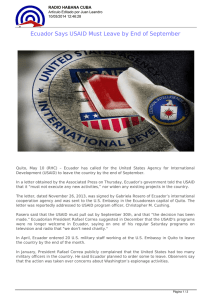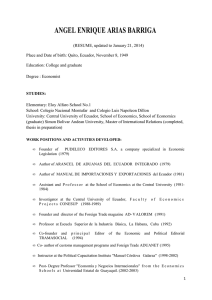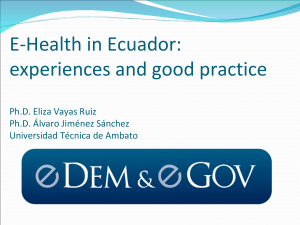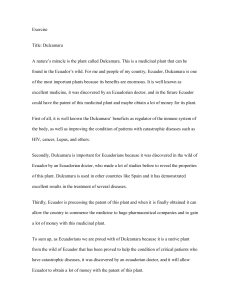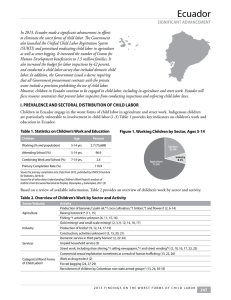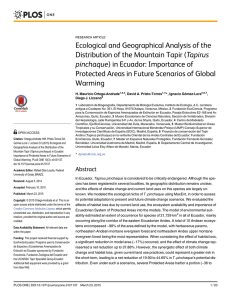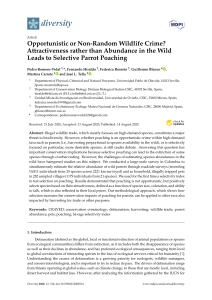Second Grade Spanish Unit 4: Los Animales
Anuncio
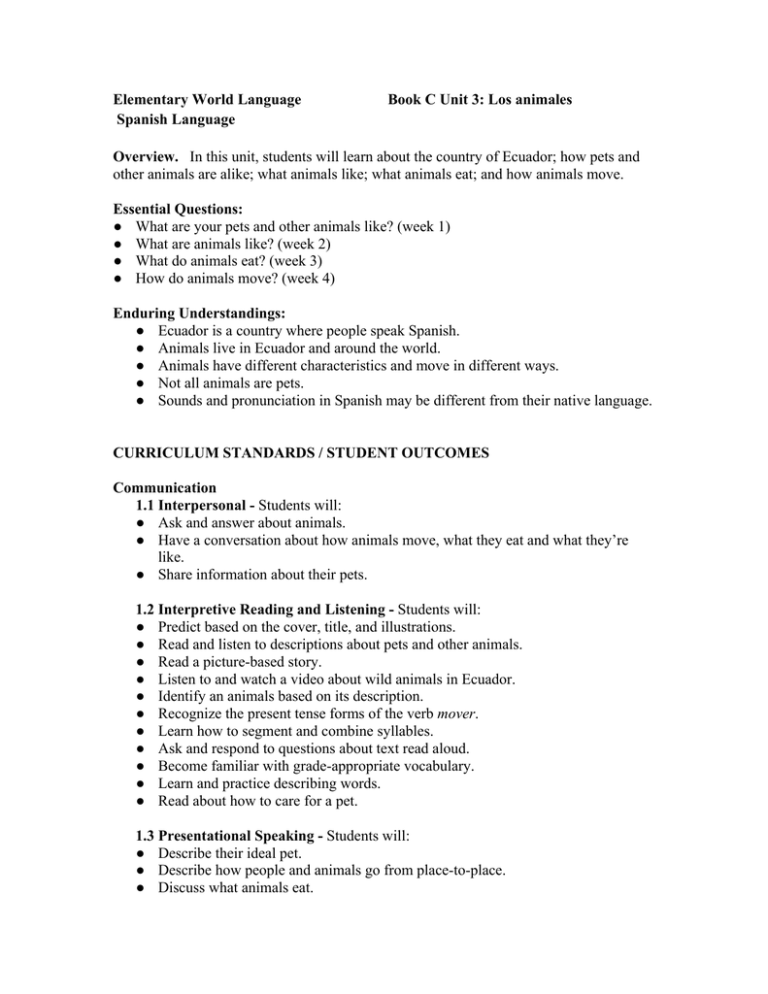
Elementary World Language Book C Unit 3: Los animales Spanish Language Overview. In this unit, students will learn about the country of Ecuador; how pets and other animals are alike; what animals like; what animals eat; and how animals move. Essential Questions: ● What are your pets and other animals like? (week 1) ● What are animals like? (week 2) ● What do animals eat? (week 3) ● How do animals move? (week 4) Enduring Understandings: ● Ecuador is a country where people speak Spanish. ● Animals live in Ecuador and around the world. ● Animals have different characteristics and move in different ways. ● Not all animals are pets. ● Sounds and pronunciation in Spanish may be different from their native language. CURRICULUM STANDARDS / STUDENT OUTCOMES Communication 1.1 Interpersonal - Students will: ● Ask and answer about animals. ● Have a conversation about how animals move, what they eat and what they’re like. ● Share information about their pets. 1.2 Interpretive Reading and Listening - Students will: ● Predict based on the cover, title, and illustrations. ● Read and listen to descriptions about pets and other animals. ● Read a picture-based story. ● Listen to and watch a video about wild animals in Ecuador. ● Identify an animals based on its description. ● Recognize the present tense forms of the verb mover. ● Learn how to segment and combine syllables. ● Ask and respond to questions about text read aloud. ● Become familiar with grade-appropriate vocabulary. ● Learn and practice describing words. ● Read about how to care for a pet. 1.3 Presentational Speaking - Students will: ● Describe their ideal pet. ● Describe how people and animals go from place-to-place. ● Discuss what animals eat. Culture 2.1 Practices and Perspectives - Students will: ● Talk about pets and wild animals in Ecuador. 2.2 Products and Perspectives - Students will: ● Describe what the animals eat based on where they are. Connections 3.1 Cross-curricular - Students will: ● Describe animals and how they live. ● Conjugate the verb mover. ● Learn how to segment and combine syllables. ● Identify animal body parts. ● Identify animals in their communities. 3.2 Target Culture - Students will: ● Acquire information about Ecuador through Spanish language media sources. ● Discuss how people in Ecuador care for their pets. Comparisons 4.1 Language - Students will: ● Demonstrate one-to-one correspondence between spoken and printed words. ● Identify the verb mover. ● Segment and combine syllables. ● Compare how people and animals move. 4.2 Culture - Students will: ● Compare animals in Ecuador to animals in their own community. Communities 5.1 Beyond the School - Students will: ● Participate in simulations that replicate authentic conversations about animals. 5.2 Lifelong Learner - Students will: ● Utilize the language to experience news and entertainment available through print and electronic Spanish language media. FUNCTIONS • VOCABULARY • STRUCTURES LANGUAGE FUNCTION CONTENT VOCABULARY LANGUAGE STRUCTURE Identify what animals they have as pets. Animal: ● mascota ● conejo ● gato ● hámster ● llama ● loro ● mono ● pájaro ● perro ● pez/peces ● pingüino ● rana ● tortuga ● ¿Qué es? ● Es un (animal). Describe their pets’ physical characteristics, including size and color. Descriptions: ● duro(a) ● suave ● pequeño(a) ● lento(a) ● rápido(a) ● marrón ● ¿Cómo es (animal)? ● (Animal) es (descriptions). Identify animal body parts. Body Parts: ● ala ● boca ● cola ● nariz ● ojo ● oreja ● pata ● pelo ● pluma ● ¿Qué tiene(n) (animal)? ● Tiene(n) (body parts). Describe how animals Movement: go from place to ● camina place. ● corre ● nada ● vuela Adverbs: ● lentamente ● rápidamente ● ● ● ● ● ¿Cómo se mueve(n)? (Movement). (Animal) (movement). ¿Cómo se mueve(n)? Rápidamente/Lentamen te Verbs: moverse ● me muevo ● te mueves ● se mueve ● nos movemos ● se mueven Discuss what animals eat. Food: ● ● ● ● ● ● ● carne cebada pasto pescado planta semilla verduras ● ● ● ● ¿Qué come(n)? Come(n) (food). ¡Qué rico! ¡Que sabroso!
